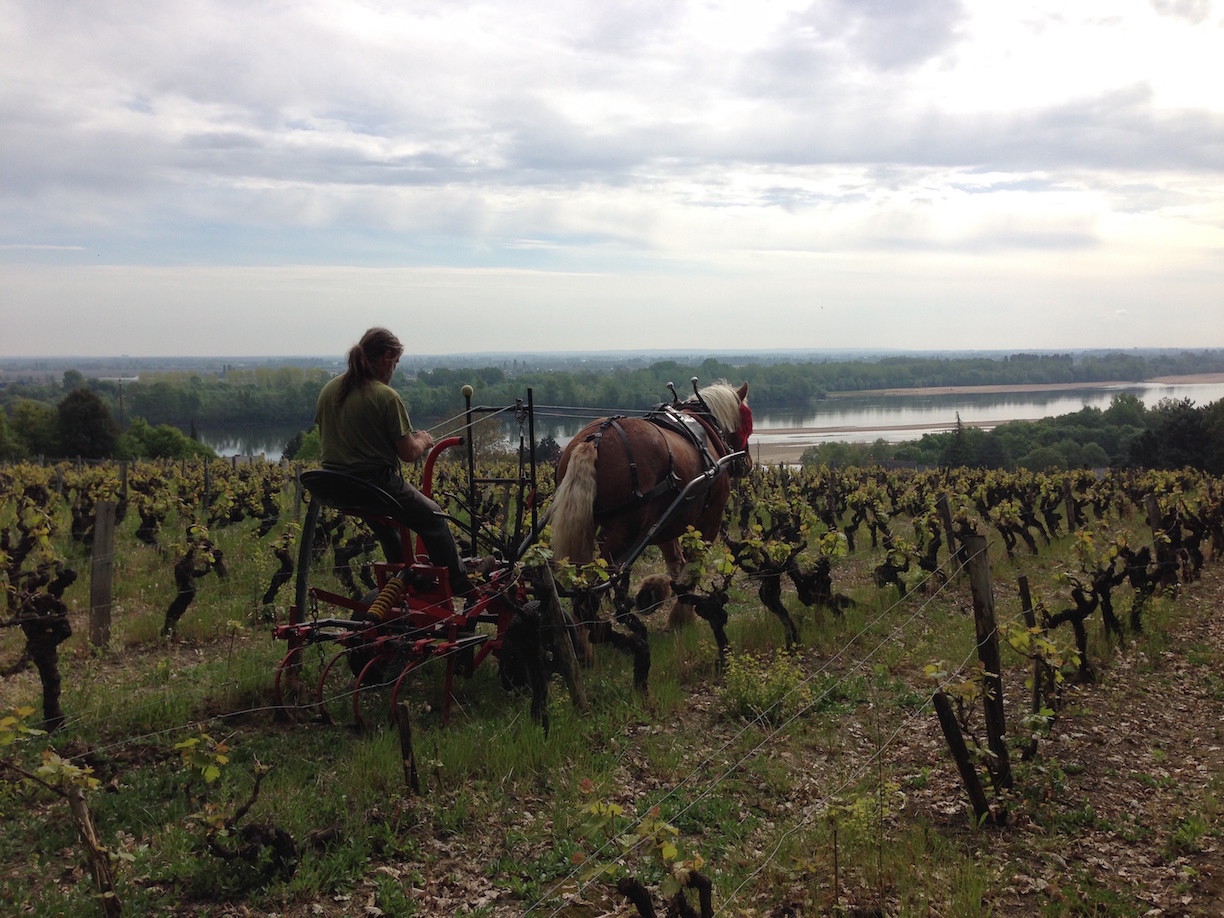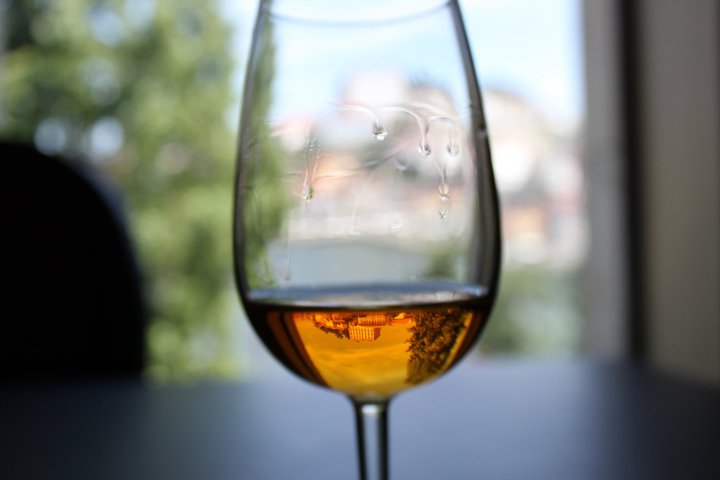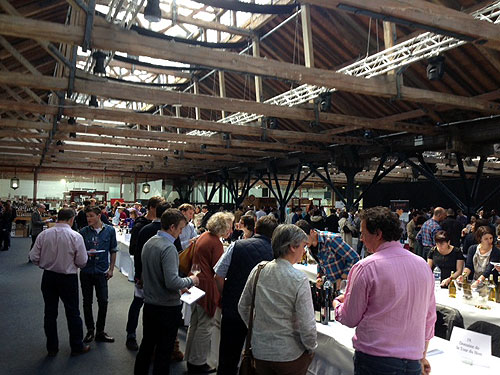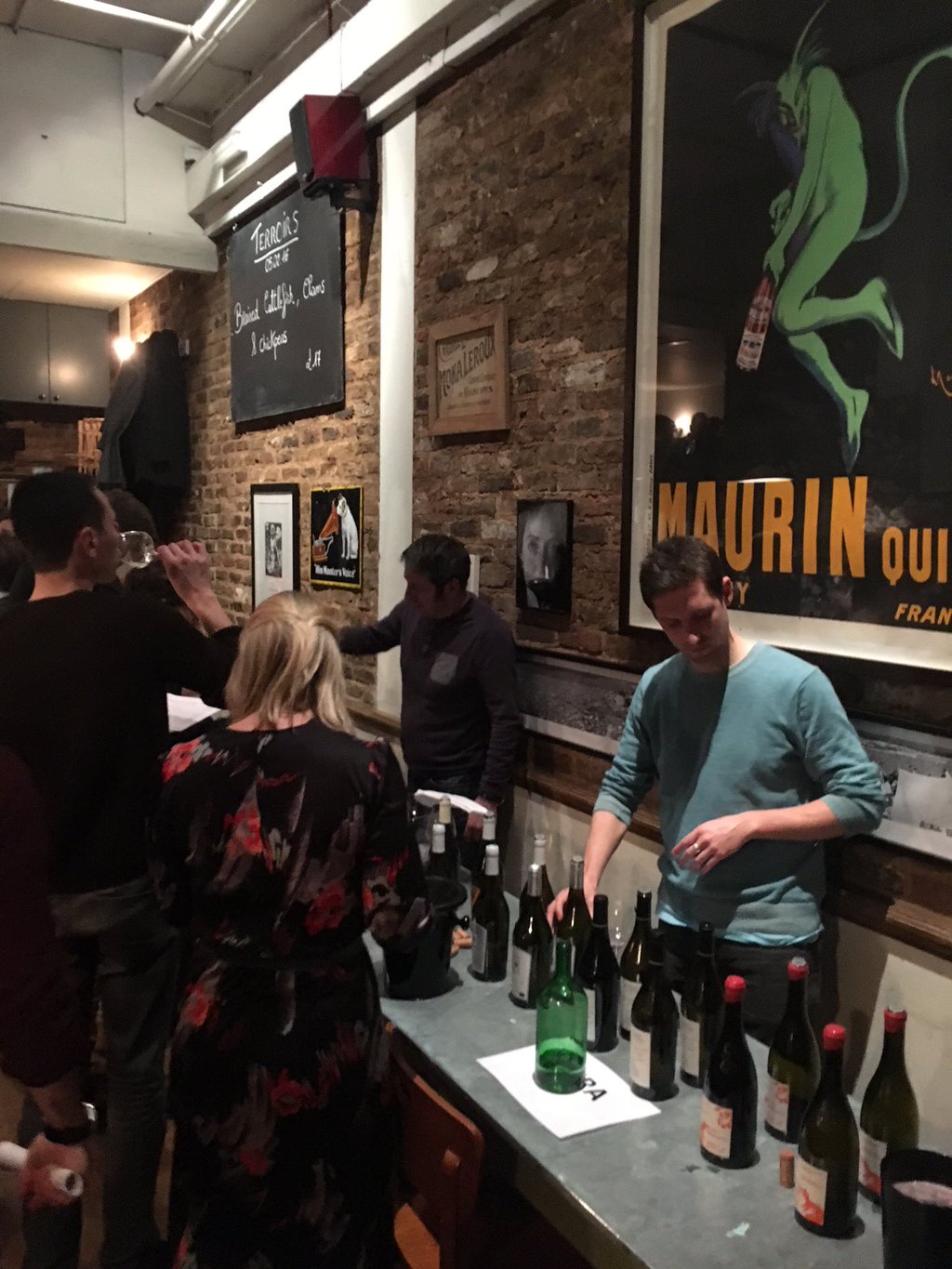I’ve argued on these pages and elsewhere that it is trite to bandy loaded terms such as “natural”, “conventional” and “movement” willy-nilly as in “natural wine movement” and to have a pop at so-called natural wine evangelists. I’ve also spoken previously about the fallacy of the sophomoric straw man argument, whereby one constructs an idea using spurious logic in order to knock it down. Whilst many in the trade fondly use redundant terminology and make assertions about wines and winemakers that simply don’t stand up to scrutiny, they are publicly shy in revealing that they barely have a nodding acquaintance with the growers and the wines they so confidently pronounce on. And simply saying that you are on the side of scientists or reflecting the views of consumers doesn’t prove that you are; it always boils down to a matter of opinion.

We can concur on certain things, such as the importance of sustainability. I believe that is only a starting point and, furthermore, that organic, biodynamic/whole farm agriculture is an ethical imperative that far outweighs the importance of producing cheap industrial wine. The toxic aftermath of intensive farming scars our landscape and destroys local ecology. Unlike some who find difficulty with the notion of biodynamics, I believe that the holistic form of farming is the sensible, prescient one and makes men and women into better, more thoughtful farmers. The native American proverb says it well: “Treat the earth well: it was not given to you by your parents, it was loaned to you by your children”.
We all agree that terroir is important. It makes one wine stand out from another, revealing the subtle stamp of the vineyard, the micro-climate, the vintage and the personality of the grower. The debate inevitably ranges on to what extent terroir is emasculated by bad winemaking. The answer to this is obvious and yet not obvious. Bad winemaking takes a variety of forms – from no intervention, where intervention is required, to clumsy intervention where little or none is needed. The critics of natural wine would have you believe that the inevitable result of little or no intervention is imperfect wine (or bad wine), therefore the winemaking must be flawed. The proponents of natural wines would say that chemical interventions strip the real personality of the wine, denaturing it and divorcing the wine from its origin.
Terroir is only latent in grapes, a form of potential energy. One of the elements of terroir – like it or not –may also be the complex and healthy abundance of yeast strains in the vineyard and winery. They provide the warp and the weft of a wine. Once you begin to detach or filter out these raw materials and substitute with extraneous flavours you begin the process of denaturing the wine. Nurture, as gentle control, is one thing; superimposition, or stripping of flavour, is quite another, and ends with a wine which is a pale shadow of itself, bent to the will of the oenologist. Sanitary, corrective winemaking often reveals the signature tropes of the winemaker and that I can usually recognise the polished signature of a Rolland or a Cotarella means that technology has all but smothered the expression of terroir. They (the winemakers) may believe that their methods help to accentuate typicity but they end up leaving their own imprint indelibly on the wine.
Peter Sichel’s observation that wine is what lies between grapes and vinegar is oft quoted. That leaves a wide range although the implication is clear – that wine is not wine when it is faulty. Our interpretation of faults differs; for some the mere presence of aldehydes, brett, VA and reduction is sufficient to deem the wine in question faulty, while for others it is a matter of degree. I believe that certain wines are so diminished and adulterated by the flavours of chemicals or particular additives that they are also faulty – one might characterise natural faults as sins of omissions as opposed to clumsy oenological faults which are sins of commission. If one substitutes flaws for faults we may then understand that the objective of wine is not to be perfect (faultily faultless, icily regular, splendidly null, to quote Tennyson) but to be individual.

And vive la difference is surely a desirable mantra. Philosophy? Schmilosophy. We are all philosophers in our pots. Diversity thrives on opposition, the dynamic-creative energy of conflict. The natural wine movement didn’t spring fully-formed out of the head of some vainglorious style guru looking for a fad to peddle, but was the result of growers becoming increasingly disenchanted with the same-old, same-old chemical-smelling, chemical-selling wines. Marcel Lapierre used to reminisce that he couldn’t bring himself to drink his own product. When the growers can’t drink their own wines that is a problem we should all be prepared to address.
A dominant patriarchal culture always spawns a vibrant counterculture, not naughty children rebelling against their fuddy-duddy elders for the heck of it, but inquisitive, intellectual, often scientifically-minded young men and women pushing the boundaries. Either autodidacts, or graduates of oenology school where they were told to obey the golden rules of winemaking, they didn’t like conventionally-made wines and so challenged orthodoxies and experimented with new techniques (which were often age-old ones). These progenitors of natural wine spawned a new generation of free-thinking vignerons who are now doing it for themselves rather than the hypothetical market-place. They tend to use a simple language to describe the principles that motivate their activities: “Respect” (for nature and terroir), “Self-respect” (making the wines you want to drink yourself) and “Humility” (never to put yourself above what nature gives you). This language is not a part of the normal critical regime which stipulates not only does man knows best, but that expensively-insured palates know best.
The phenomenon that critics call natural wine has developed deeper roots, a definite beating heart and a fairly secure soul and is continuing to grow organically, not through myth and spin, but through trial and error, and because growers and winemakers constantly question their methods, and because the results are evidently pleasing growers and drinkers alike. The beauty of natural wine is that it is not a trend and so is not ephemeral; it lies at the centre of the pulsing debate about what is authentic.
It is often asserted that there was more good wine to drink now than ever before. Vastly more wine is made than ever, and certainly, more competently, but there is still a growing reservoir of homogeneity, of mass-produced mediocrity to fill the many miles of supermarket shelves. Replicating a formula is not tantamount to making better wine. Fault-free wines are not necessarily interesting or exciting wines. The new “fit-for-purpose” wine is fit for the price bracket, most of it is stripped and neutral. Branding creates a faux-diversity, pretending to promote varietals and regions. It is at the expense of style; you don’t have to be a Decanter judge to see how similar a 5.99 Colombard from Gascony is to a similar priced Viura from Rioja, a Fiano from southern Italy or a South African Chenin.

What we look for in wines is as highly personal as is our sense of taste. I recognise in wine something that is mutable, drinkable with food and has the potential to captivate, challenge and, on occasions, disappoint and annoy. Great wine is inspirational, not because it conforms to a template of how wine is made, but because it takes you on a serendipitous journey, unlocks memories, tantalises and pleasures your senses.
Like the average consumer I drink for fun rather than to analyse and I don’t mind flaws, edges and uncertainties. The antithesis is the taster who experiences wine on a zero-defect scale – sans soul, sans passion, sans love –exalting one over another style of winemaking. I do not agree with the oenologists who like Old Testament prophets preach that absolute cleanliness is next to godliness.
Many in the trade are in jobs where they are ultimately responsible to the end product user – a spade should therefore be a spade – a Sauvignon identifiably a Sauvignon – there should be square wines for square times. But not all customers are square.
It is presumptuous (but it happens in all walks of life where critics critique) to believe implicitly that one knows better than the artisan-vigneron. Just like drinkers and wine critics, artisan winemakers are certainly not infallible, but their actions in the vineyard and winery determine the final personality of the wine. And the wines are the way they are for a reason. Decisions, such as topping or not topping up barrels, how much sulphur to use, to push for malo or not, to let fermentation take its natural course, in other words, all the physical choices of winemaking, will influence the development of the wine itself. For me, however, the paradigm of good winemaking is knowing when to step aside and leave the wine to its devices.
Some natural wines are meant to be drunk for thirst – the clue is in the name – Soif du Mal, Il Fait Soif, Trinch!, Ca’ C’Est Bon, Vin de Petanque…whilst others are of the vineyard. The purple schists and flower-carpeted vineyards of Laurent Herbel and Nadège Lelandais, the unique blue marls of Jura for the Chardonnay & Savagnins of Jean-François Ganevat, the granitic slopes of the northern Rhone for Dard & Ribo’s Saint-Jo and the manganese-rich limestone and clay soils of Macon for the Clos des Vignes du Maynes, all transmit their original flavours and mineral salts into the wines themselves. All the vineyards are farmed biodynamically, other than Dard, which is organic. Vines for these wines are 110, 100, 90 and 50 years old, respectively contributing concentration and mineral verve. The stories of all the growers also deserve to be told, for the wines are very much expressions of their personalities and the journey of the particular vintage. When I see the fault-sniffers, reduction hounds and oxidation haters reducing (no pun intended) wines to the sum of the aromas they’re not sure about, I know that wine tasting has become a cognitive demi-science and lacks an emotional, instinctive dimension. One hears stories of growers like Teobaldo Cappellano who banished journalists from his cellars because of what he perceived as the invidious practice of marking wines rather than tasting the wines for what they were.
Three of the above examples conform (if that’s the word) to a more mainstream, non-interventionist style, while the other is a tad more full-on (ironically the one with the greatest intervention). Nothing here to frighten the horses or the conventionally-tuned palate. Ya think?! Whenever I have shown these particular wines to consumers in the past, they have told me that they were prepared for something funky, and were surprised how “straight” the wines were. The wine trade, however, is an altogether different beast and I witnessed numerous tasters abstracting from the fact that they had guessed which wines were natural and consequently defaulting to imprecise tasting terms such as “funky”, “oxidative” and “weird”. What is weird is the disjunctive reasoning which affirms that natural, by definition, equals weird i.e. unnatural. This deductive method – where tasters use the knowledge of what the wine is to determine their judgements – contrasts with the more spontaneous reaction of tasters with no preconceptions or prejudices and who will tell you what they think of the wines on the simple basis of whether they like drinking it or not. I love the wines because they possess so many nuances, nuances that one misses when one plays the game of “spot the natural wine.”

Some say, with a twinkle, that all our wines betray a CDP style – as if Mr DJ Uberfunk is sole proprietor in da house. This is not accurate– we have different buyers with different personalities and give them rein to buy wines that they like. We seek typicity and terroir. We like wine from indigenous grapes and wines which taste as if they were made by hand. They may taste relatively conventional or sublimely unusual – and every shade between – but they should always possess personality. What unifies the buying is the following single simple consideration (ancillary to the sustainable/organic arguments): “Would we drink this?” We are not trying to second-guess the taste of hypothetical consumer or imagining how the wine would sit on the shelf of a supermarket. We are not a hollow conduit for products; rather we buy wines that we like and then communicate our sense of excitement and pleasure to our customers.
Finally, a reasoned call for tolerance – let’s appreciate diversity and understand that wine is a moving feast. Not so many years ago there were probably a dozen vignerons working naturally, whilst now there are many many hundreds – and more every year. No single movement exists; dozens of tasting and fairs do, featuring growers who share their ideas, and more importantly, share their wines, with others.
I’m happy enough to use the expression “natural wine”, not in an emotive or morally superior way, rather to propose it as a commonsense alternative to the status quo. The theoretical resistance to natural wine is that wine is always made by man and so can never be natural. So what else might be considered analogous to natural wine? I like my cheese unpasteurised, my bread to be sourdough, my orange juice to be squeezed from fresh oranges and my fish to taste of the sea and I suspect a lot of wine aficionados do as well. In other words, we all enjoy things that taste of where they come from and arrive on our tables with very little or no mediation or processing. The human influence in these examples is tantamount to setting the transformative procedure in motion and leaving pretty well alone. Why should wine be considered any different to these natural products? You would have to ask certain wine professionals who can’t see this correlation and believe that the primary purpose of any product is to be absolutely consistent – and stable.
Natural wine has been made in one form or another for 8,000 years. It is tempting for every generation to think they have the best answers and that the present day is always the refinement of all the knowledge there has ever been. Progress is not simply the appliance of science and more skillful use of technology; it is the wisdom to know what to do and how to make things. Often we use technology as a crutch and allow critics to set our taste standards. Sustainable and natural winemaking is surely more than that. Defenders of authenticity should support the conservation of autochthonous grape varieties, traditional farming techniques and hands-on winemaking as all these help to perpetuate a healthy diversity. Technically sound, manipulative winemaking ensures only one kind of outcome, a wine that appeals to a common denominator palate. That may be broadly desirable, but we definitely prefer uncommon wines. There is no need for antipathy or quasi-philosophical posturing. As Eric so aptly puts it: “There are the wines that I like, that he hates. And there are the wines that he likes, that I would never drink. And somewhere in the middle are the wines we both like drinking and we drink together.”


Thanks for another great post. I wish there was more wine writing like this, and I look forward to reading more of your articles.
Chapeau!